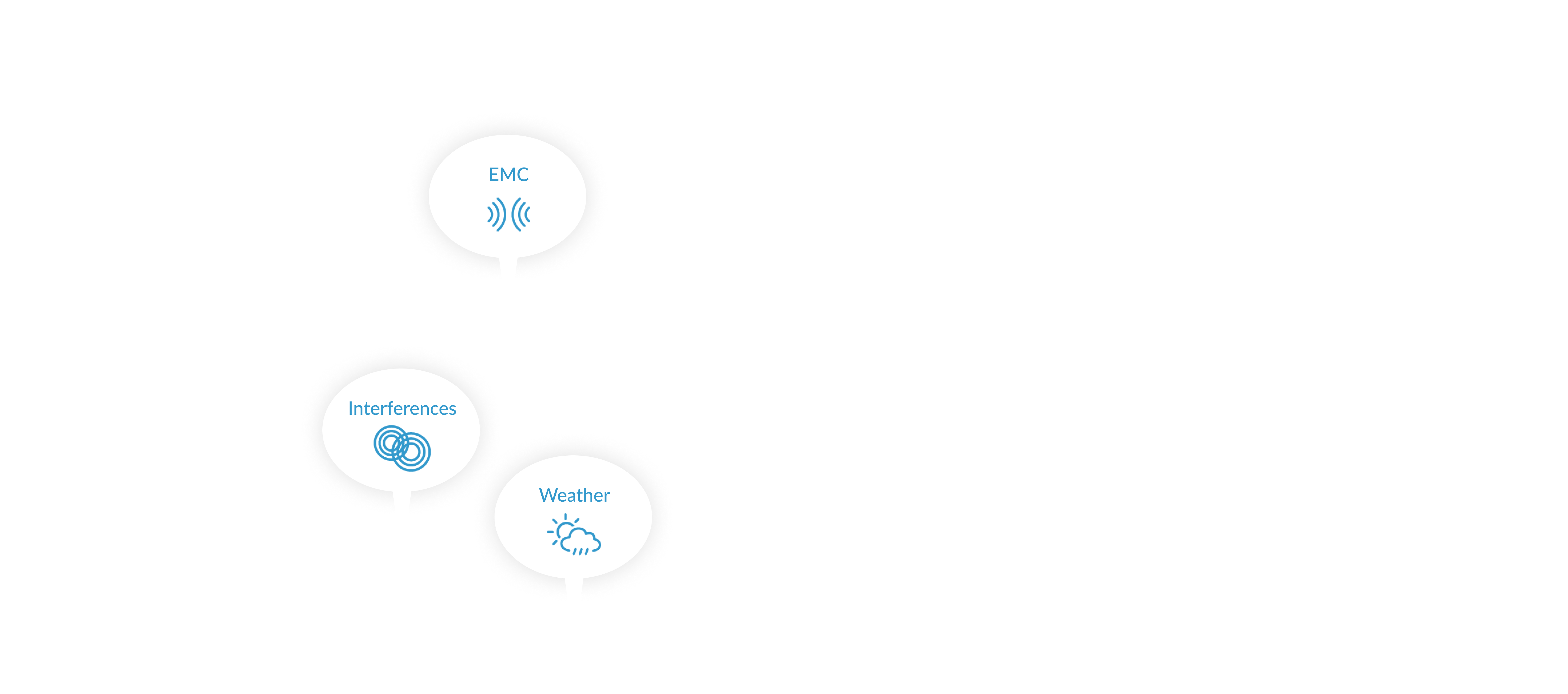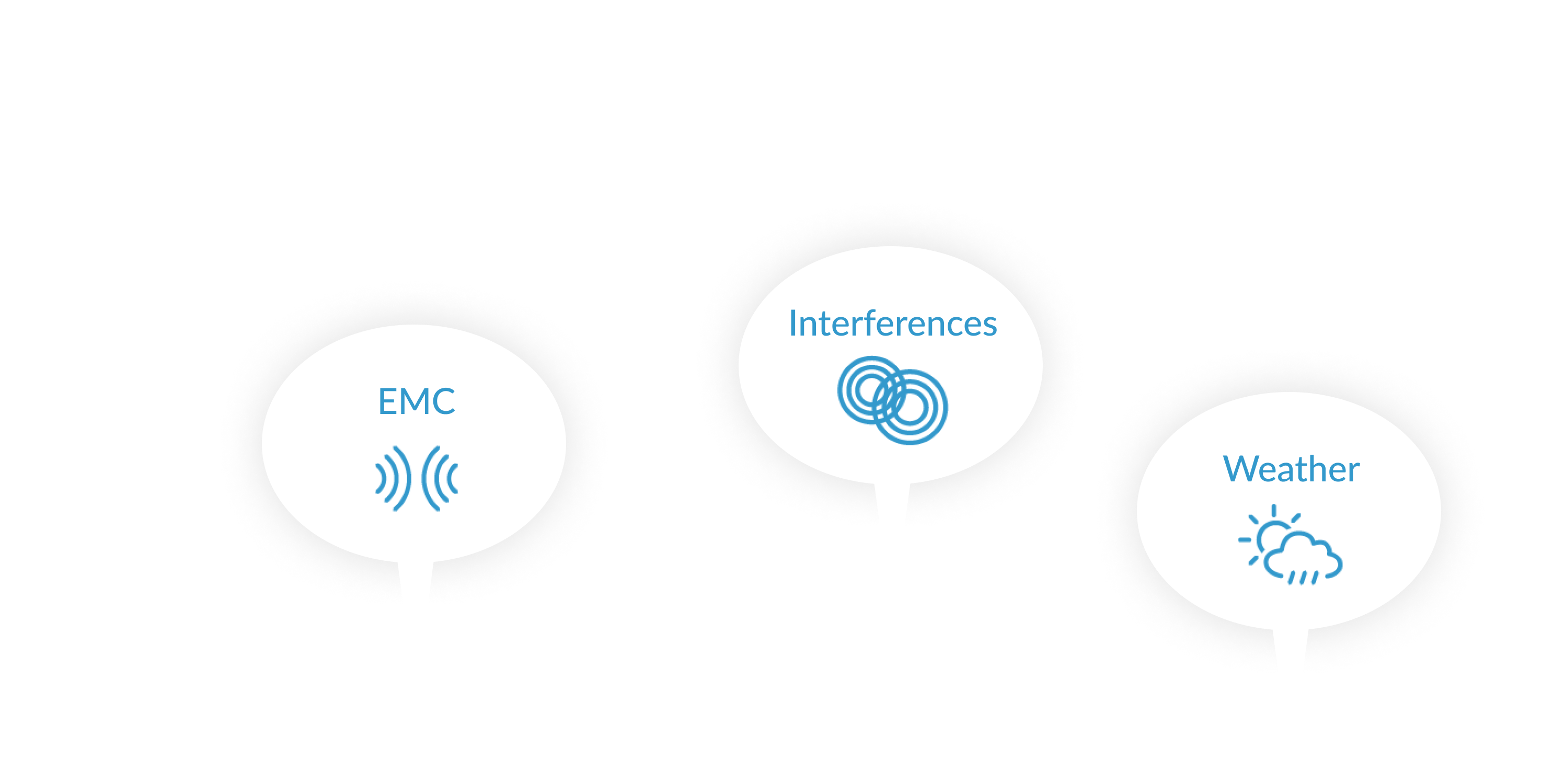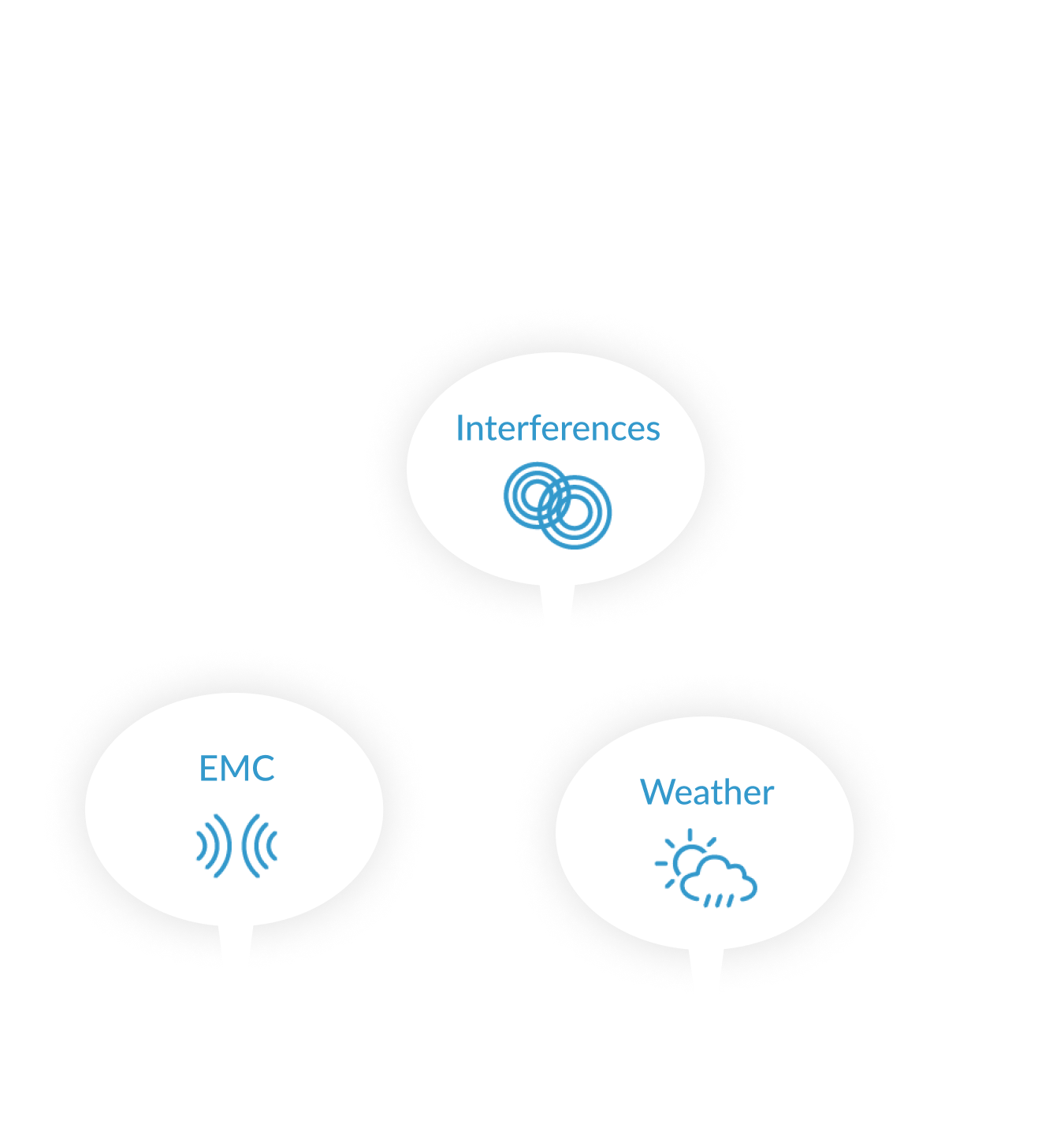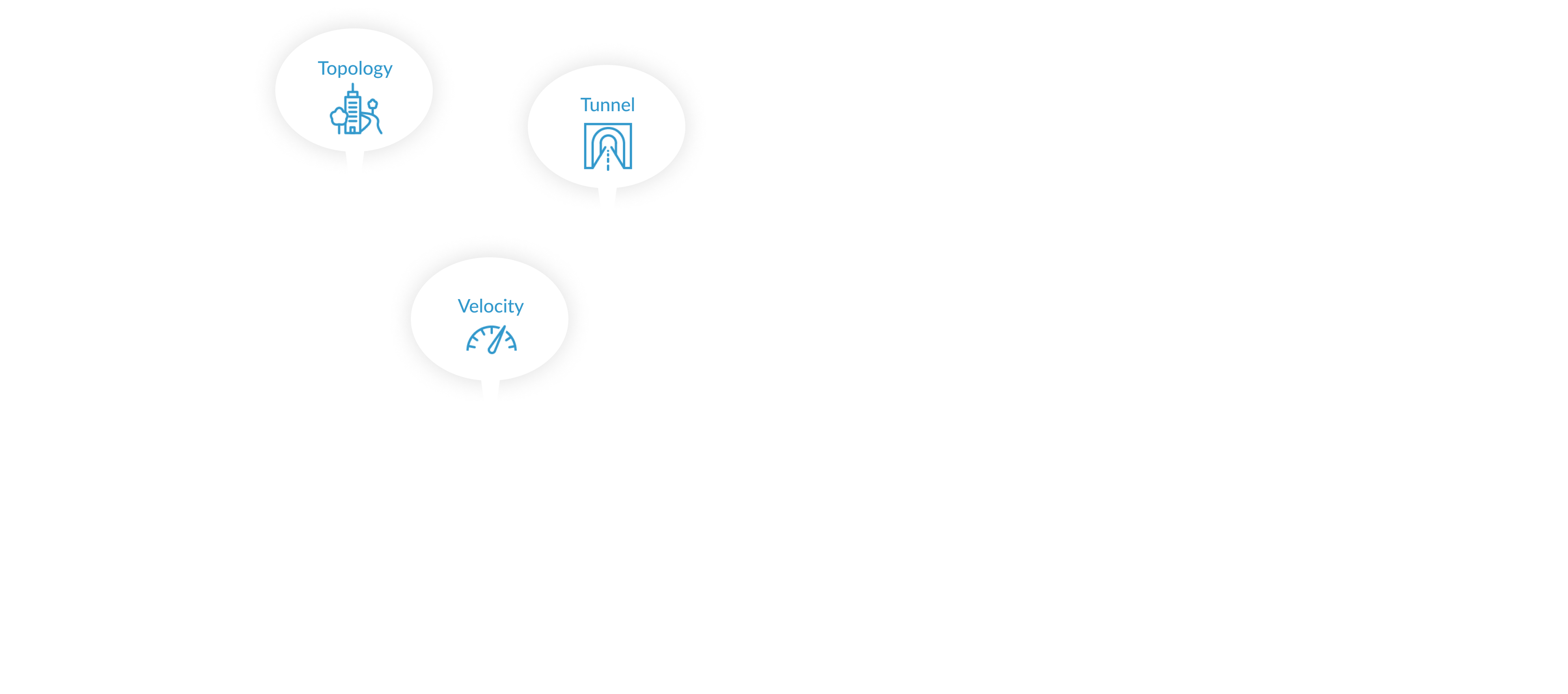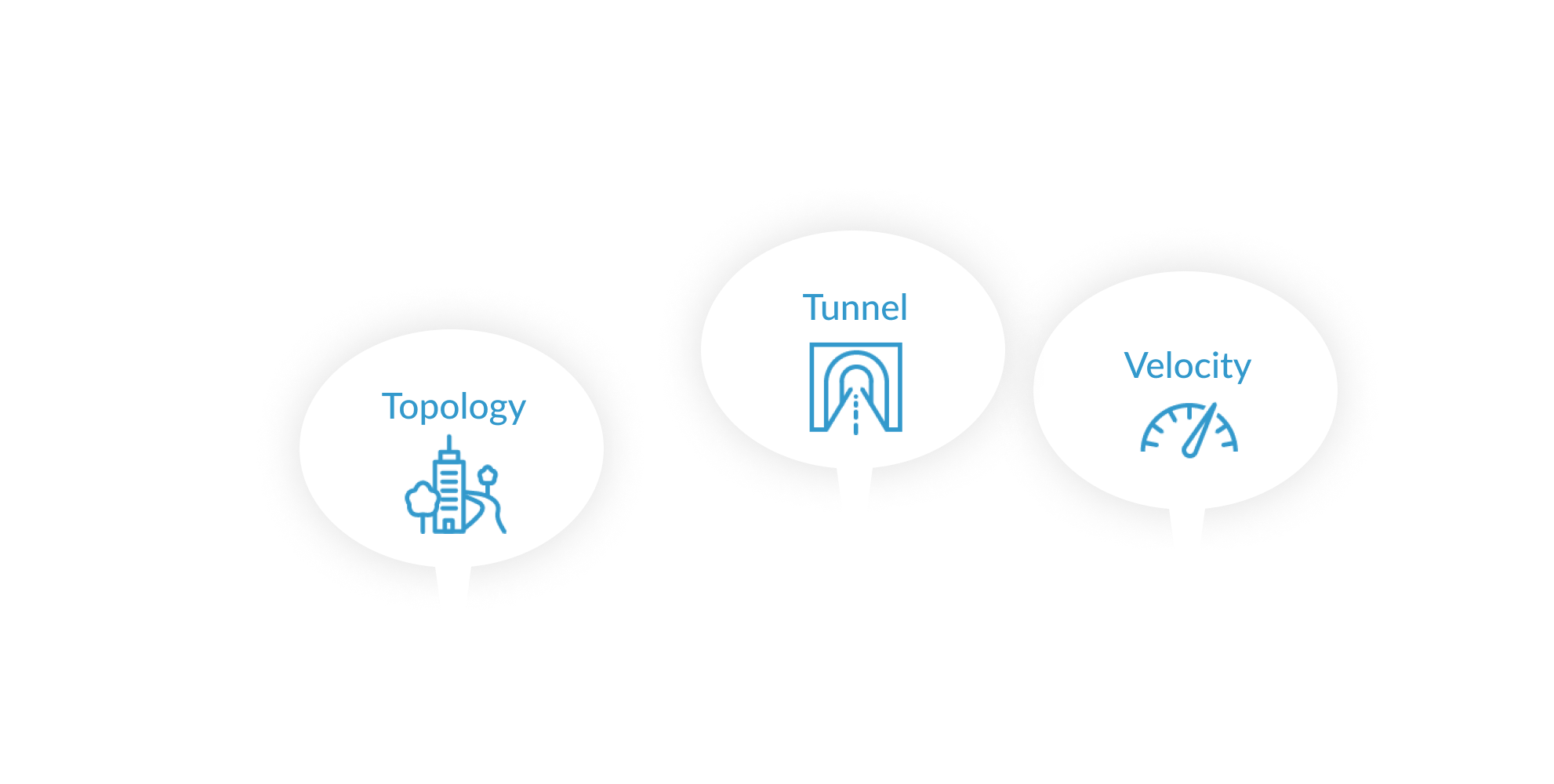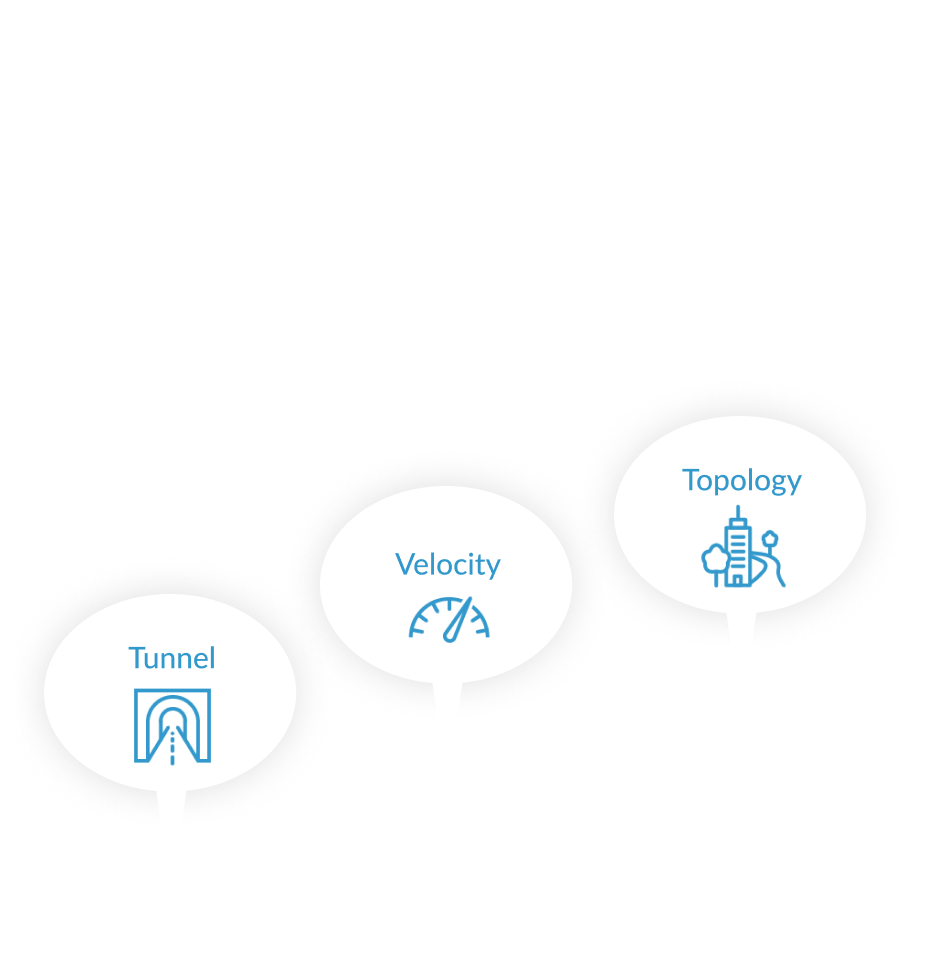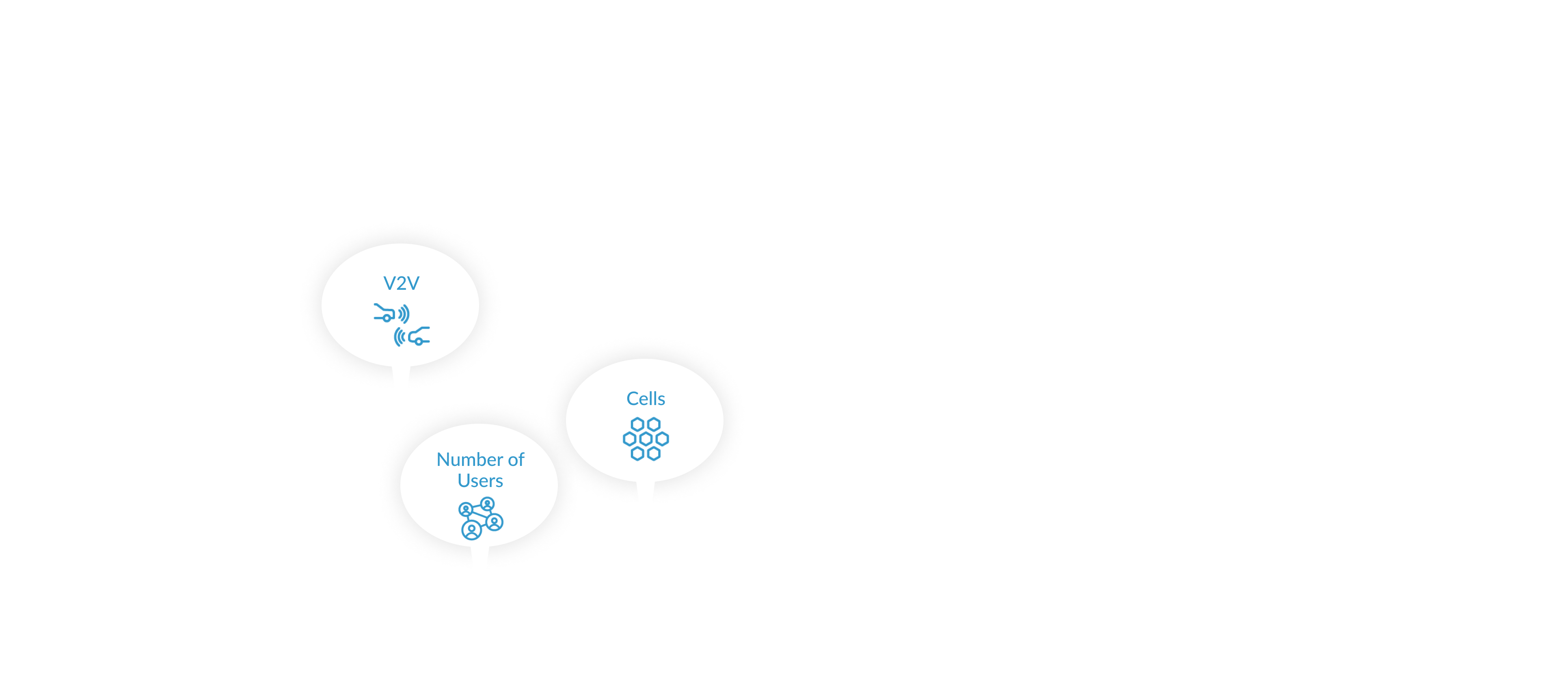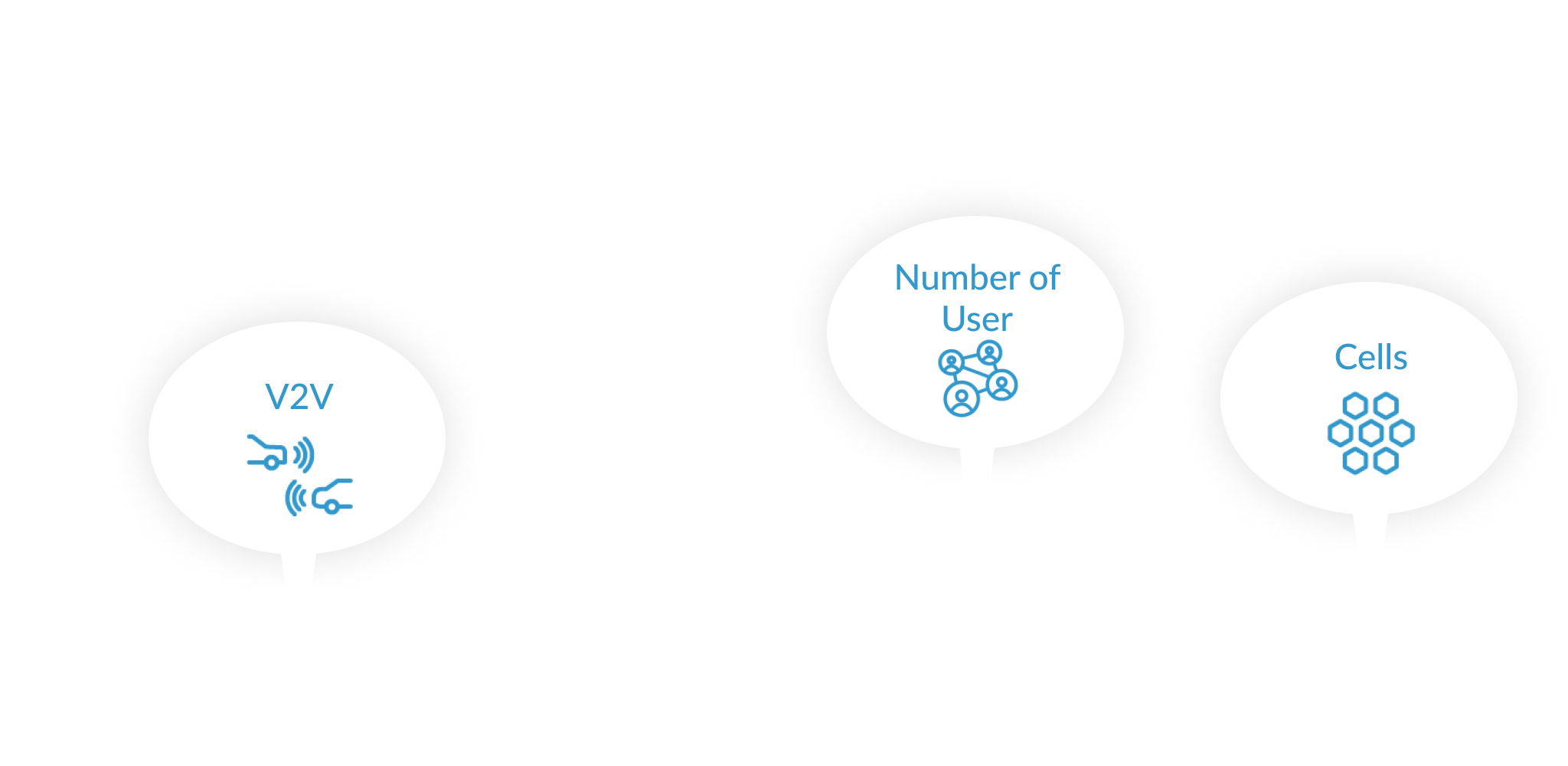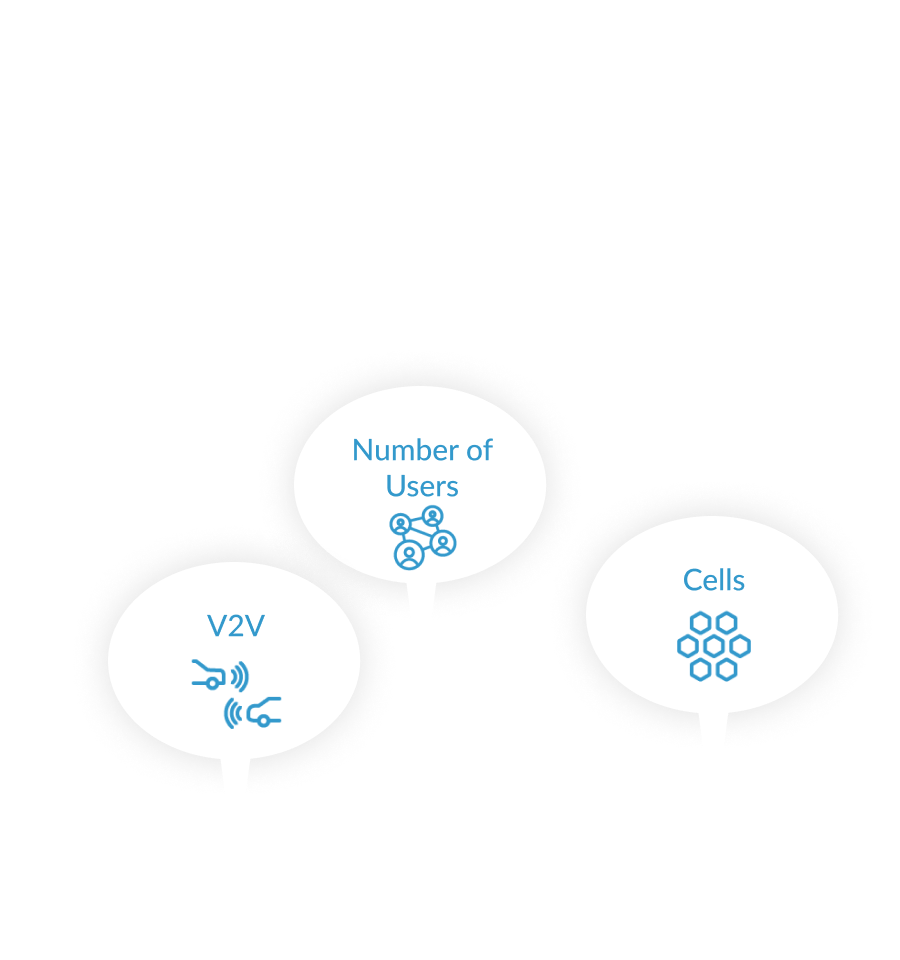Real constraints in the data channel
In reality, the data channel is influenced by a variety of factors. These include interference and environmental influences, the radio environment, and network properties. The combination of these factors results in radio scenarios and thus the radio scenario portfolio. Completing the radio scenarios, taking into account the infinite variations, is mandatory to ensure a secure and performant over-the-air data link. For this purpose, new real test data is collected and supplemented by data from simulated test runs. One challenge here is the complete mapping of the complex radio environment, taking into account the various influencing factors, as well as the correct characterization of the collected data for a targeted evaluation.



The „Twin-Concept”

To create a digital development environment for connectivity systems, the entire radio scenario portfolio is completed with real and simulated measurement data and then, with the help of artificial intelligence (AI), reduced to the absolutely critical cases. By extrapolation, frequencies and modulation standards are completed and finally mapped together with the radio scenario portfolio in a "digital twin". This image of the real radio environment is then tested and evaluated as part of a "proof of concept" in a measurement chamber on the vehicle.
With this solution approach, the connectivity systems of tomorrow can be developed and validated quickly, safely and robustly, while saving costs and resources. The approach also leads to greater safety in road traffic and prepares for the standardization of connectivity system tests. Last but not least, Germany as a business location also benefits from the acceleration of transformational innovations in the connectivity sector.
